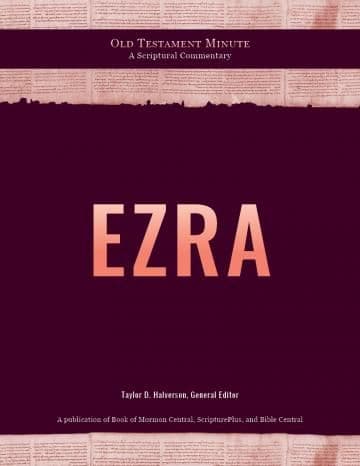Book
10 Chapters

Chapter 2 lists the genealogies of those who returned to Jerusalem from Babylon as well as those who would work in the Jerusalem temple. This chapter also addresses the issue of who was qualified to work at the temple since proper lineage in the priesthood was a requirement. The chapter ends by extolling the generous donations of some toward rebuilding the temple.
Most of this chapter lists individuals and families who returned to the Jerusalem area after they or their forebears were carried into Babylonian exile. This list also appears in Nehemiah 7:6–73 with variations. (The Nehemiah that appears on this list is not the Nehemiah who arrived in Jerusalem and later became a leader.) Even though this is an extensive list, historical records reveal that many Jews decided to stay in and near Babylon and so subsequently developed religious communities there.[1] Some of the lists are based on individuals and some on locations in Judea.
The list continues with the descendants of priests and temple functionaries. Temple functionaries included Levites, singers (sons of Asaph; Psalms 50 and 73–83 are attributed to Asaph), porters, Nethinim (servants of the temple who assisted the Levites), and Solomon’s servants (probably another group of temple laborers descended from the Canaanites mentioned in 1 Kings 9:21).
Verse 59 mentions that some people had genealogical lineage that was uncertain or could not be demonstrated. Instead of listing their genealogy, it lists some of the places in Babylon where these people came from (Tel-melah, Tel-harsa, Cherub, Addan, and Immer).
A consistent theme throughout Ezra and Nehemiah is the demonstration of accurate lineage to qualify people for the priesthood and leadership. This was a part of reconstituting and defining the identity of the religious community when they returned to Judea.
In ancient times, priesthood authority was passed through lineage. Today, it is not required that someone be descended from a specific lineage to hold the priesthood. All worthy male members of The Church of Jesus Christ of Latter-day Saints may hold the priesthood, and their authority is traced not through genealogy but through lines of authority.
This section specifically discusses some priests’ children whose genealogy was not found among the priestly lineages. Therefore they were considered impure and excluded from the priesthood. They were told they could not eat the most holy things until a priest using Urim and Thummim could determine a change of status.
In Israelite worship, the Urim and Thumim were kept in the breastplate pocket of the high priest. Joseph Smith received another set of Urim and Thumim from the angel Moroni to aid in the translation of the Book of Mormon.
Verse 63 states that it was the tirshatha who told these men they could not eat. Tirshatha is an old Persian term meaning “revered” or “governor.” Some think the term could refer to Nehemiah.
The list summed up the total numbers of returnees as 42,360, excluding thousands of servants, singing men and women, and animals (horses, mules, camels, and donkeys) that accompanied them to Jerusalem.
The last section of the chapter highlights the sacrifices of resources and abilities that were given to restore the house of God. Today, Saints still sacrifice time and wealth in order to build, participate in, and maintain temples of the Lord on the earth. And they in turn are blessed for their sacrifice.
Verse 70 mentions the various temple priests and functionaries settling and dwelling in Jerusalem.
[1] These records are known as the Al-Yahudu tablets. See images of the tablets at the following: https://commons.wikimedia.org/wiki/File:Al-Yahudu_Tablets1.jpg and https://commons.wikimedia.org/wiki/File:Al-Yahudu_Tablets3.jpg.
Items in the BMC Archive are made publicly available for non-commercial, private use. Inclusion within the BMC Archive does not imply endorsement. Items do not represent the official views of The Church of Jesus Christ of Latter-day Saints or of Book of Mormon Central.
How would you evaluate this content?